How to Create an Entryway in a Small Apartment
No foyer? No problem. Learn how to create an entryway in a small apartment with genius ideas for shoe storage, wall organizers, and small mudrooms.
Making an Entrance: My Step-by-Step Guide to Creating an Entryway in a Small Apartment
There’s a unique challenge that comes with small apartment living: the front door that opens directly into your living room. One minute you’re outside, the next you’re standing in the middle of your main living space with keys in one hand, mail in the other, and shoes that need a home. It can feel abrupt and chaotic. As a long-time tiny home enthusiast and the founder of Neat Tiny Home, I’ve seen this layout countless times, and I’m here to tell you that you don’t have to be doomed to a life of floor piles and last-minute key searches. You don’t need a formal foyer to have a functional, beautiful, and organized entrance. The secret is learning how to create an entryway in a small apartment by carving out a dedicated zone, even if it’s just a few square feet of wall space.
This guide is my personal playbook for faking a foyer. We’re going to go beyond just putting a mat down and calling it a day. We’ll dive into actionable strategies and clever tricks to build a “landing strip” that works for you. We’ll explore genius entryway shoe storage solutions that hide clutter, versatile small mudroom ideas that can be adapted to any space, and the key decorative elements that will make your new entryway feel intentional and welcoming. My goal is to show you exactly how to create an entryway in a small apartment that not only corrals clutter but also sets a calm and organized tone for your entire home the moment you walk through the door.
The Psychology of the Entryway: Why a Landing Strip is Non-Negotiable
Before we get into hooks and shelves, let’s talk about why this is so important. Your entryway is the first and last part of your home you interact with every day. It’s the transition point between the outside world and your personal sanctuary. Without a designated spot to shed the day’s baggage—both literally and figuratively—that chaotic energy spills into your living space. A proper landing strip serves as a crucial buffer. It provides a ritual for arrival and departure, allowing your brain to switch modes. This is more than just convenience; it’s about creating a psychological boundary that helps maintain the peace and order of your home. Understanding this concept is the first step in learning how to create an entryway in a small apartment successfully.
It’s More Than Just a Drop Zone: Setting the Tone for Your Home
Think of your entryway as the opening credits to your home’s movie. It sets the scene and establishes the mood. A cluttered, disorganized entrance sends a message of stress and chaos, which can subconsciously affect how you feel in your own space. Conversely, a tidy, well-organized, and welcoming entryway communicates calm, order, and intention. It greets you and your guests with a sense of peace. This small, functional zone becomes a powerful statement about how you want to live. It’s your home’s firm handshake, its welcoming hug. That’s the real power you unlock when you learn how to create an entryway in a small apartment.
Step One: Defining Your Space, Even if It’s Just a Wall
Your first task is to stake your claim. Since you don’t have a dedicated room, you need to create a visual one. The easiest way to do this is to choose a wall—typically the one right next to the door handle. This wall will become the anchor for your entire entryway system. You can define the space further with a few simple tricks. A narrow runner rug on the floor can create a visual pathway. Painting the wall a different accent color or applying removable wallpaper can also carve out the zone. Even just strategically placing a piece of furniture, like a slim bench, can signal “this is the entryway.” This act of defining the space is the critical foundation upon which all other organizational elements will be built.
Building Your Entryway Vertically: Wall-Mounted Wonders
In a tiny home or apartment, the walls are your most valuable asset, and this is especially true when creating an entryway from scratch. Since you’re likely working with minimal floor space, building up is the only way to go. Vertical storage is the key to creating a highly functional entryway that doesn’t intrude on your living area. By using the wall space effectively, you can create designated spots for coats, keys, mail, and more, all within a compact footprint. These wall-mounted solutions are the workhorses of a non-existent foyer and the most important part of how to create an entryway in a small apartment.
The Power of Hooks: For More Than Just Coats
Hooks are the unsung heroes of entryway organization. They are inexpensive, easy to install, and incredibly versatile. Go beyond just a couple of coat hooks. Consider a full row of them to accommodate guest jackets, purses, tote bags, dog leashes, and scarves. I recommend installing them at two different heights—a standard height for adults and a lower row for children’s backpacks or for sitting down to hang a purse. Look for stylish options that complement your decor; hooks can be a design element, not just a utility. For inspiration, check out the beautiful and functional hook selections at Rejuvenation.
Slim Floating Shelves and Ledges for Keys and Mail
Every entryway needs a surface to drop keys and mail, but a bulky console table is usually out of the question. This is where a slim floating shelf or picture ledge comes in. Install a small shelf right above your hooks. It provides just enough space for a small bowl to catch keys and loose change, a spot to place your mail, and maybe even a small decorative item like a plant or candle. This “drop zone” surface is absolutely critical. Without it, your keys and mail will inevitably end up migrating to the kitchen counter or dining table. This single shelf is a cornerstone of learning how to create an entryway in a small apartment.
Genius Entryway Shoe Storage Solutions for Tight Spaces
Let’s be honest: the biggest challenge in any entryway is the shoes. They are bulky, often dirty, and can quickly turn into a frustrating pile of clutter. Finding effective entryway shoe storage is paramount. In a small space, your solutions need to be compact, efficient, and ideally, they should conceal the shoes to reduce visual noise. Luckily, there are many brilliant options designed specifically for this purpose. A good shoe storage system will not only clear your floor but will also make your morning routine so much smoother. Say goodbye to the frantic search for a matching shoe!
| Shoe Storage Type | Best For | Pros | Cons |
|---|---|---|---|
| Slim Wall Cabinet (e.g., IKEA TRONES) | Narrow hallways, minimalist look | Zero footprint; conceals shoes completely. | Doesn’t fit bulky boots; requires wall mounting. |
| Storage Bench | Providing seating and storage | Multi-functional; defines the space. | Takes up floor space; can look cluttered if open. |
| Baskets or Trays | A casual, budget-friendly option | Flexible; easy to implement; contains mess. | Shoes are visible; can become a jumbled pile. |
Benches with Built-In Cubbies or Shelving
If you have a bit of floor space to spare, a storage bench is one of the most functional pieces of furniture you can own. It serves three purposes at once: it provides a place to sit while putting on or taking off shoes, it offers excellent entryway shoe storage in its base, and its presence helps to visually define the entryway zone. Look for a bench with cubbies, shelves, or even a lift-top lid. This single piece of furniture can often solve most of your entryway problems, making it a powerful tool for anyone figuring out how to create an entryway in a small apartment.
Combining Form and Function: Small Mudroom Ideas You Can Actually Use
The concept of a “mudroom” might seem like a distant dream for apartment dwellers, but you can absolutely create the *function* of a mudroom in a tiny space. A mudroom is simply a hardworking transition zone designed to handle the messier aspects of coming and going. By combining a few key elements, you can build your own mini-mudroom. These small mudroom ideas focus on creating a durable, all-in-one station for your outerwear, bags, and shoes, protecting the rest of your home from dirt and clutter.
The “Faux Mudroom”: Using Furniture to Define a Zone
You can create a “faux mudroom” by using a single piece of furniture as your anchor. A classic hall tree is the perfect example—it combines a bench, hooks, and often a shelf into one vertical unit. If a hall tree is too bulky, you can achieve the same effect by pairing a slim bench with a row of hooks and a shelf mounted on the wall directly above it. This creates a cohesive, intentional “mudroom moment.” This is one of the most effective small mudroom ideas because it consolidates all entryway functions into one clearly defined and organized space.
Weather-Proofing Your Zone: Rugs and Trays for Wet Boots
A crucial function of a mudroom is to contain outdoor elements like water, mud, and snow. Place a durable, easy-to-clean runner or doormat in your entryway zone. For rainy or snowy climates, a boot tray is an absolute must. It’s a low-profile tray with a raised lip that contains water and dirt, protecting your floors. You can slide it neatly under your entryway bench when not in use. This small detail is a practical lifesaver that keeps your entire apartment cleaner.
The Little Details That Make a Big Difference
Once you have the functional elements in place—hooks, shelves, shoe storage—it’s the finishing touches that will elevate your space from a mere storage zone to a true entryway. These small details add personality, improve functionality, and make the space feel welcoming and complete. This is the final step in learning how to create an entryway in a small apartment; it’s what makes the space feel like a deliberate and stylish part of your home.
The Importance of a Mirror
A mirror is a small entryway’s best friend. It performs two critical functions: first, it allows for a quick appearance check before you head out the door. Second, and more importantly, it reflects light and creates an illusion of depth, which can make a small or narrow space feel significantly larger and brighter. Hang a mirror above your drop-zone shelf or choose a storage unit with a built-in mirror. This is a classic interior design trick that works wonders. For inspiration on using mirrors in small spaces, check out design blogs like The Spruce.
By thoughtfully combining these functional and decorative elements, you can successfully solve the “no-entryway” dilemma. Your new, dedicated zone will bring order to your comings and goings and create a warm, welcoming first impression for you and your guests every single time.
What are your biggest entryway frustrations? Do you have a favorite space-saving trick for your own landing strip? I’d love to hear about it in the comments below!
Frequently Asked Questions (FAQ)
My front door opens right against a wall, leaving a very narrow space. What can I do?
This is a common layout! Your best bet is to focus on ultra-slim, vertical solutions. Use picture ledges instead of full shelves. Opt for a wall-mounted shoe organizer like the IKEA TRONES, which is only a few inches deep. Use single, low-profile hooks instead of a bulky coat rack. Focus on making that one wall as hardworking as possible without adding any bulk.
How do I add an entryway to a studio apartment without making it feel more cramped?
In a studio, defining the space without creating visual barriers is key. Use an open-backed shelving unit (like an IKEA KALLAX) placed perpendicular to the door. This creates a sense of separation and provides storage without completely blocking the sightline, keeping the space feeling open and airy. A strategically placed runner rug also works wonders to define the zone without adding any physical bulk.
What’s the single most important item for a newly created entryway?
If I had to pick just one, it would be a wall-mounted unit that combines hooks and a small shelf. This single piece solves the two biggest problems: a home for your coat/bag and a drop-zone for your keys/mail. It’s the functional core of any entryway, and you can build out from there as space allows.
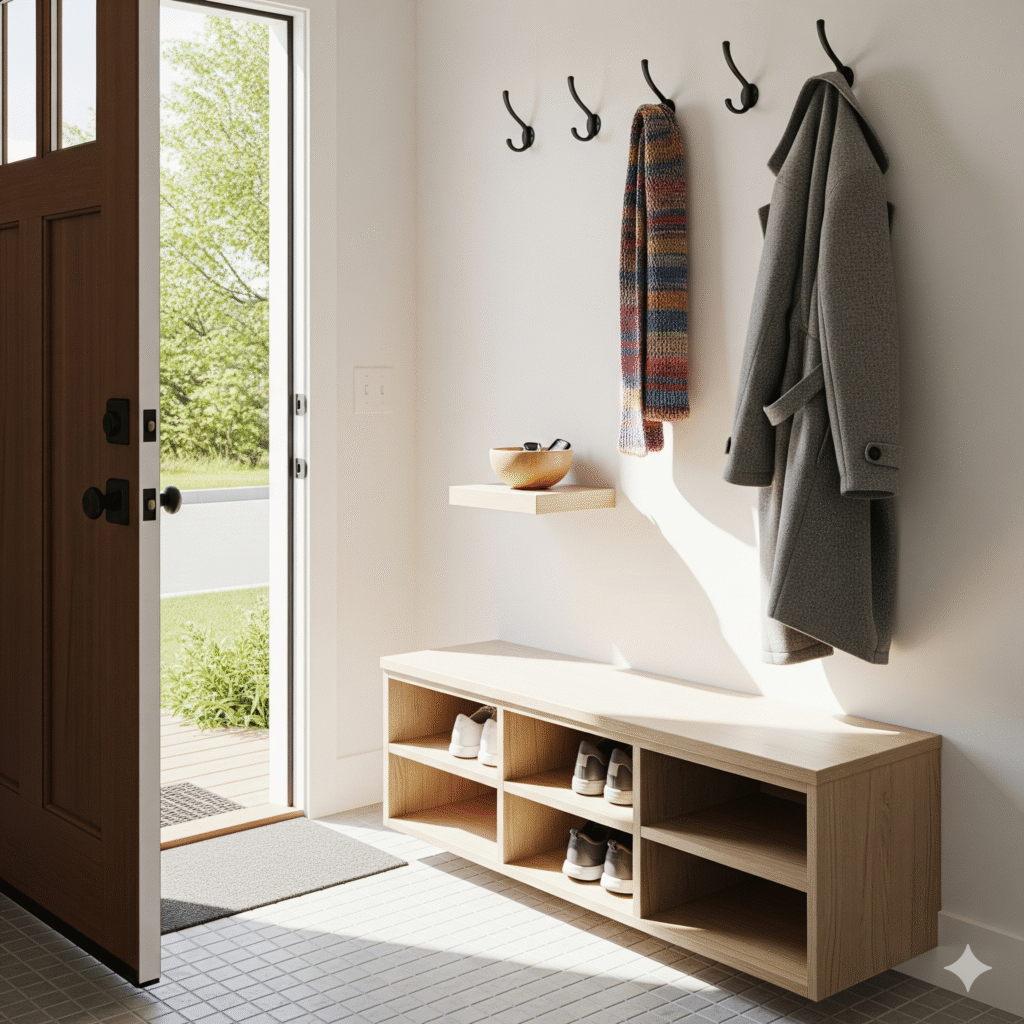
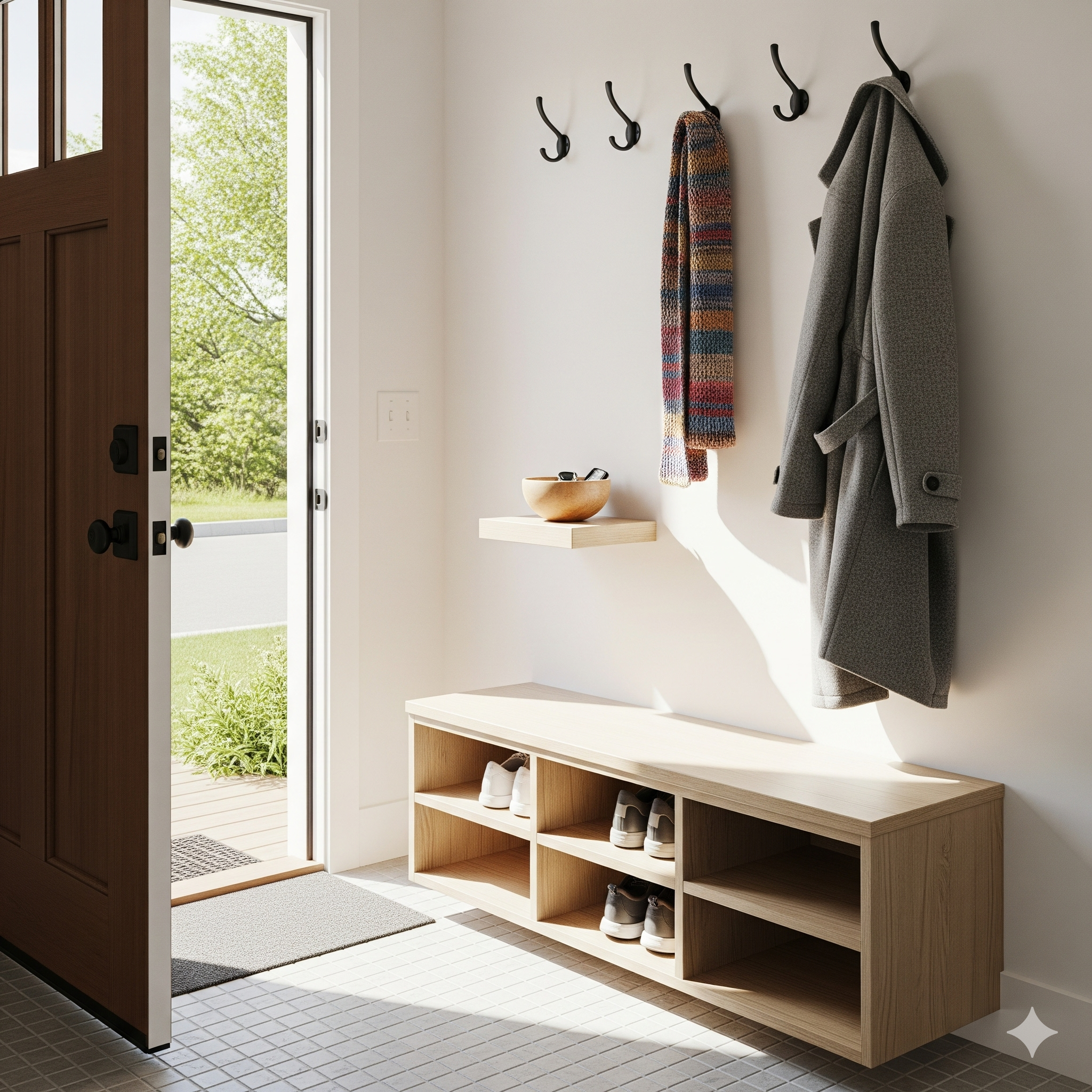
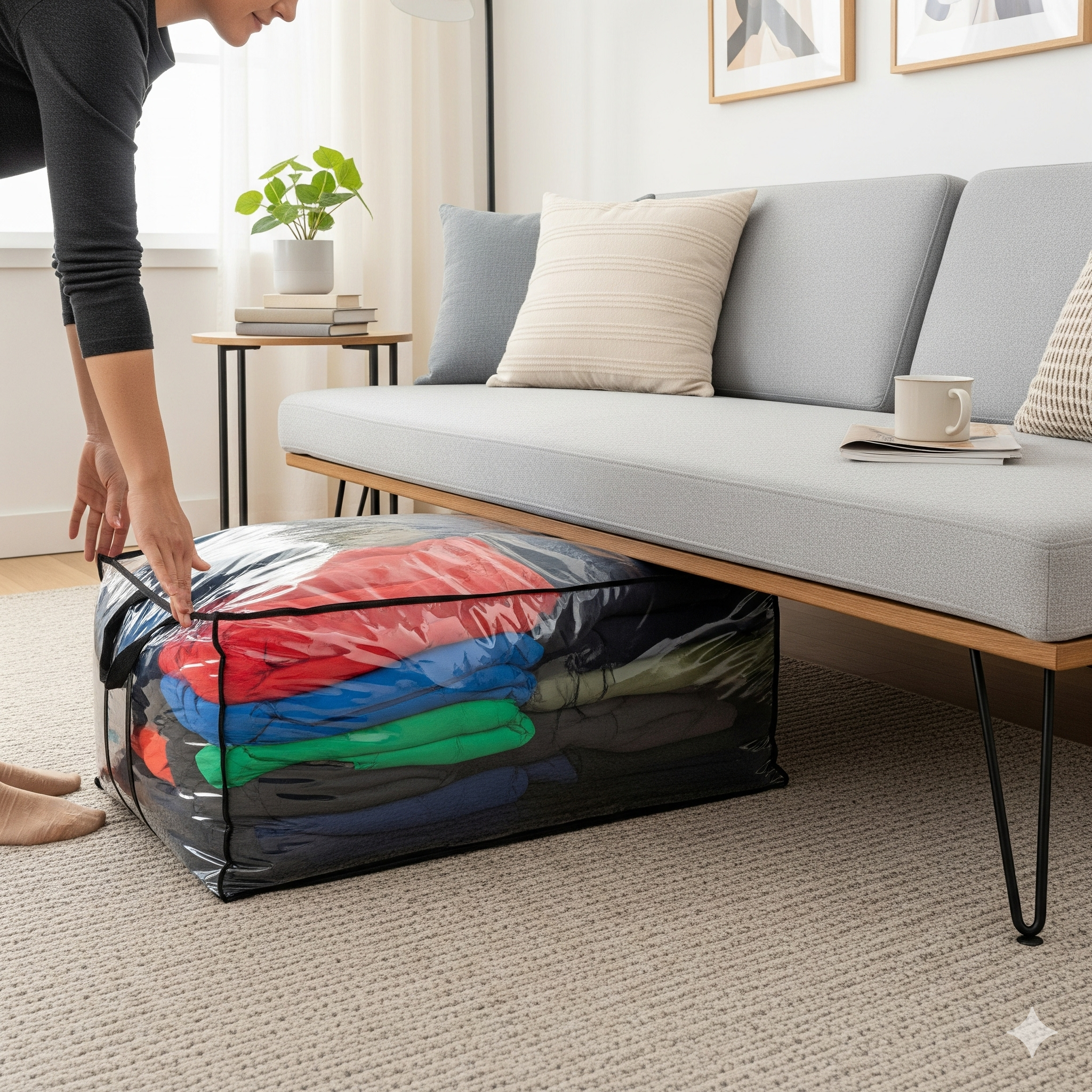
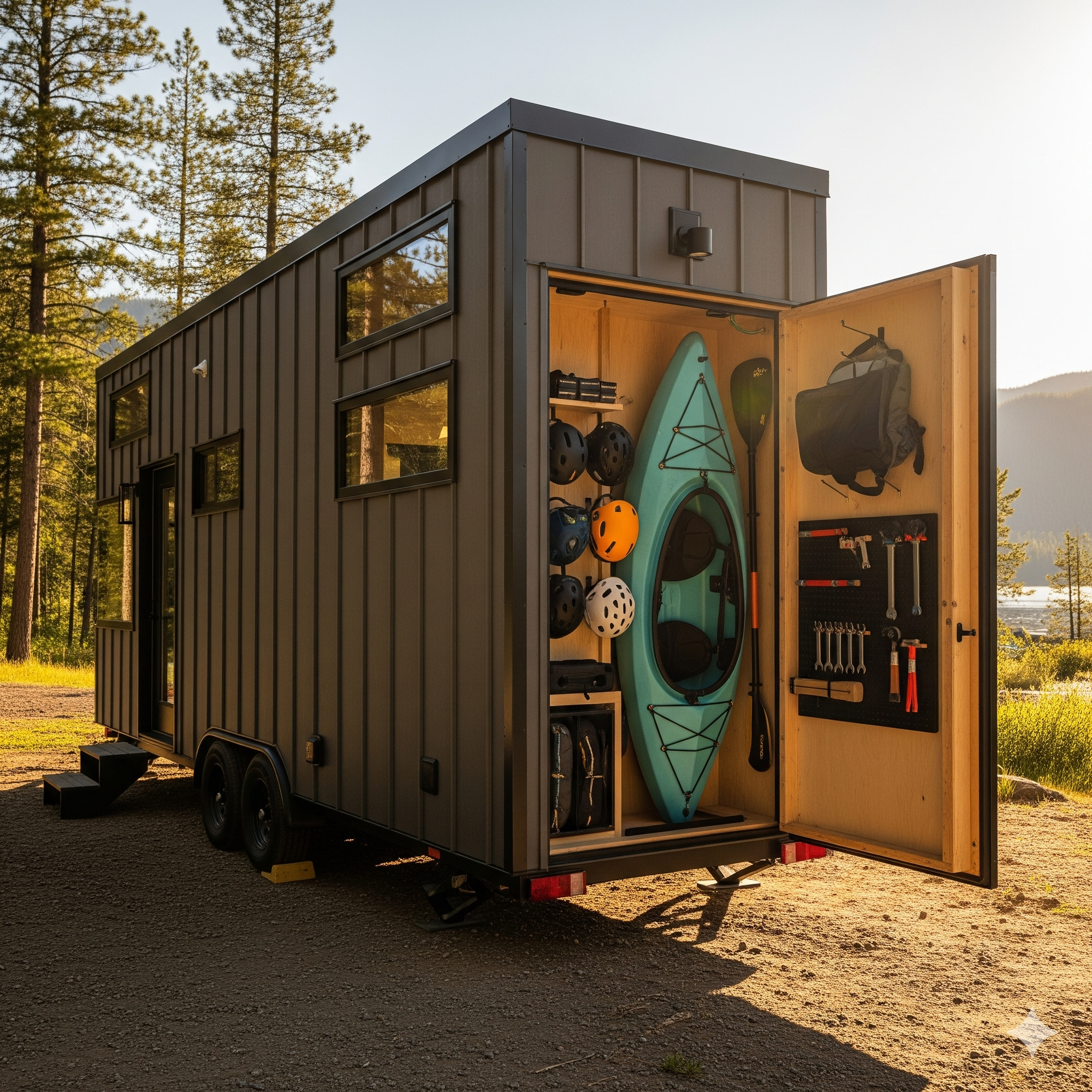
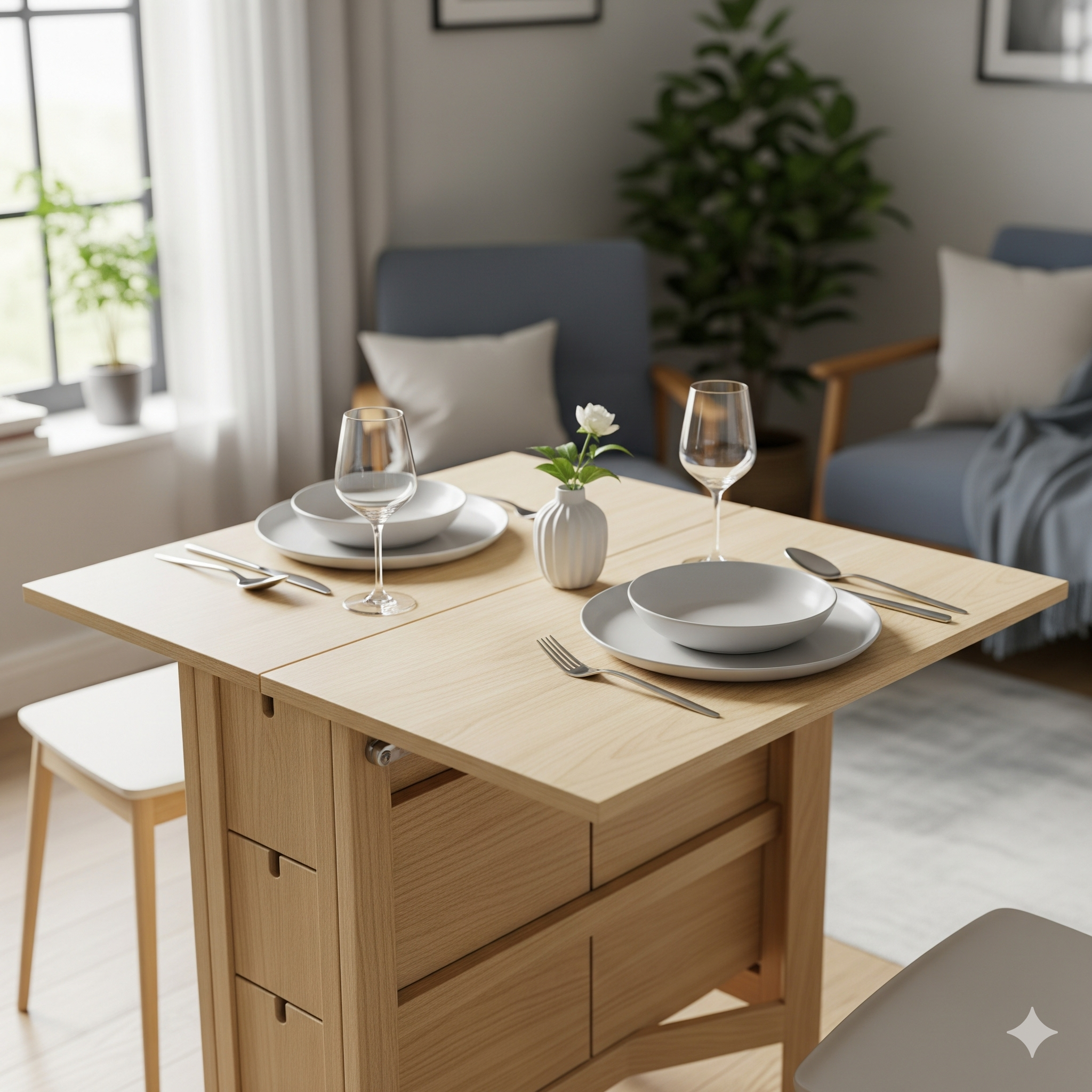
Post Comment